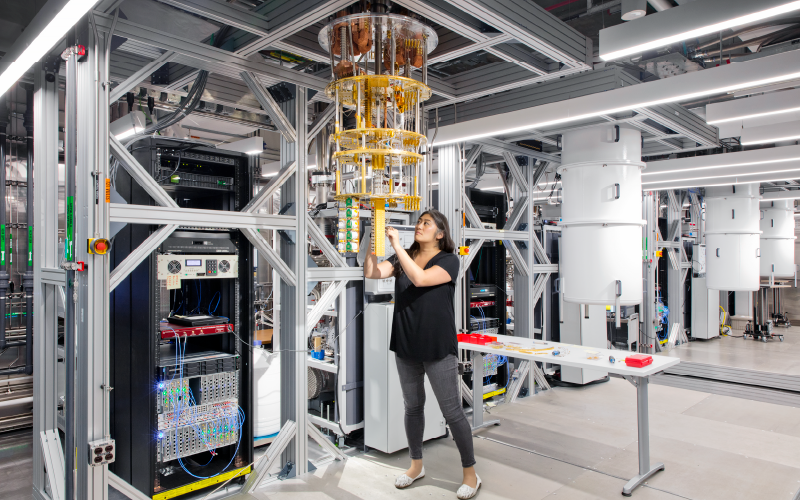
Quantum computing: is quantum mechanics the next computing superpower?
Stranger things: discover quantum computers, which are based on a new approach to computing powered by the strange behaviour of subatomic particles.

The following was adapted from an ILL News article.
How do scientists develop new materials for the computers of the future? Discover the rare magneto-electric properties of layered perovskites.
The storage and analysis of huge amounts of data has become central to many research fields, from healthcare to climate to economics, especially when it comes to predicting the behaviour of complex systems. Quantum computing (see Quantum computing: is quantum mechanics the next computing superpower?) could be the next step in the evolution of information technology systems, with new materials required to handle and store massive data sets. No matter how you look at it, the development of large, high-performance data-storage systems is a central challenge for the future of information technologies.
It is thus necessary to investigate new materials and new states of matter that have the potential to provide solutions for data storage, data transmission, and quantum computers. This is the case for perovskites, which have been extensively investigated by scientists due to their rare magneto-electric properties. In this article we introduce perovskites and showcase recent breakthrough results regarding their unique properties.[1]
Originally, perovskite was the name of a mineral first found in the Ural Mountains in 1839 by Gustav Rose, and named after the Russian mineralogist Lev Perovski (1792–1856). It is made of calcium, titanium, and oxygen with the formula CaTiO3. Today, the term perovskite refers to all materials with the same crystal structure as that of CaTiO3: an ABO3 crystal structure in which A is a rare-earth metal, B is a transition metal, and O is oxygen. Perovskites may be also structured in layers, with the ABO3 structure separated by thin sheets of other materials; these are called layered perovskites.
Depending on the elements that are present, the structure of perovskites can change from cubic to more complicated shapes (i.e. from a highly symmetric form to a lower-symmetry one), and an impressive array of interesting and intriguing properties may arise. The tuneable structure and variable chemical composition of perovskites confer unique properties, making them potential candidates for many applications, from fuel cells to data-storage devices. One of these properties is multiferroic behaviour, which we will introduce below.
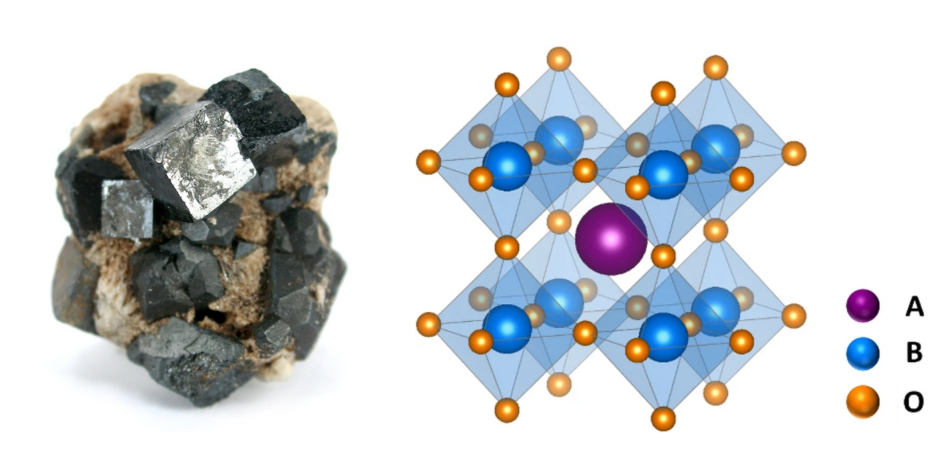
Magneto-electric multiferroics are materials that have special electric and magnetic properties: they combine ferroelectricity (characterized by a net electrical polarization) and magnetic properties (arising from the magnetic moments of their atoms, which in turn depend on the quantum states of electrons). In some multiferroics, the electric and magnetic properties are strongly linked to each other (scientists say they are ‘coupled’). A well-established case is spiral magnetic order: the magnetic moments of neighbouring atoms arrange themselves in a spiral pattern, which in turn is able to create electric dipoles.
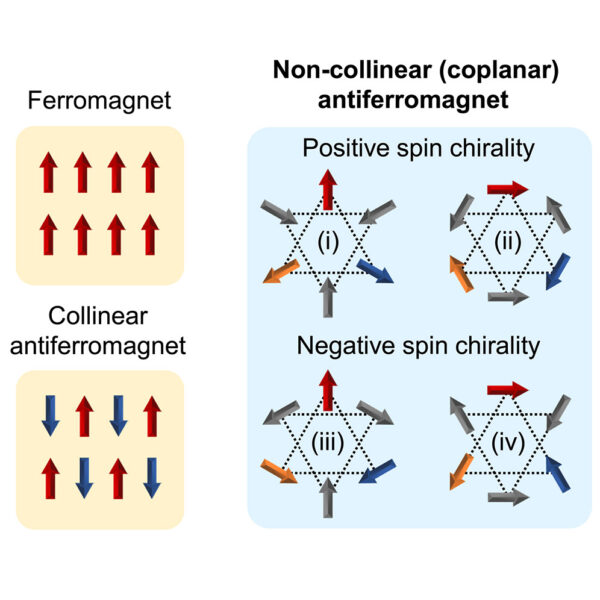
Coupled magnetic and electric orders make it possible to act on magnetic properties using an electric field, and to act on electric properties using a magnetic field. Notably, using an electric field to act on the magnetic order – for example, to change the state of a bit in a data-storage device – consumes much less energy than doing it using a magnetic field, as in many present-day electronic devices. Moreover, such materials are usually less volatile (less perturbed by external magnetic fields), which increases memory stability. Coupled multiferroics are thus promising materials for new data-storage devices.
Spiral multiferroic materials are rare. In fact, these properties only arise with very specific configurations, arrangements, and orientations of the atoms in a crystal. In most multiferroic materials, this characteristic ordering only happens at very low temperatures, typically below 50 K (equivalent to −223°C). Cooling to such low temperatures is generally achieved using cryogenic liquids, such as liquid nitrogen or helium, which are substances that are gases at room temperature and pressure but liquids at extremely low temperatures at which most material are solids. This is impractical for computing devices; you don’t want to have to submerge your computer in liquid nitrogen for it to work! Finding materials that behave in this way at room temperature, or at least at temperatures that are easier to keep devices at, is an important research goal.
The layered perovskite YBaCuFeO5 is a rare case of coupled magnetic and electric properties at room temperature and above and is thus promising for various applications. Y is the chemical symbol for yttrium, which you might not have come across before. Can you find it on the periodic table? Yttrium is a rare earth element (REE) and is not easy to obtain, but it does have a number of important uses, including in smartphones. The multiferroic behaviour of YBaCuFeO5 had been established in previous studies by different research teams up to 350 K (close to 77°C). However, the underlying magnetic structure had not been unambiguously determined, which means that the origin of this interesting magneto-electric behaviour was not really understood.
Theorists suggested a mechanism (named ‘spiral order by disorder’) that could explain the fact that the presumed spiral magnetic order was preserved at unexpectedly high temperatures. However, there was no conclusive data to support the existence of spiral order in these materials; certainly not a good starting point for developing applications based on this material! The available results,[2] obtained with polycrystalline samples using powder neutron diffraction measurements, were compatible with spiral order but also with other types of arrangements that would not give rise to ferroelectricity. A study to disentangle the different possibilities was needed, and this was achieved recently by a team of researchers who used neutrons to explore the material in great detail.[1]
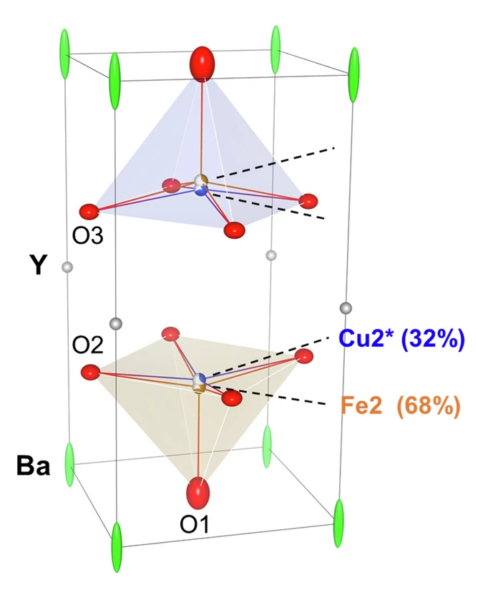
Neutrons, together with protons, form the nuclei of atoms. Neutrons have an electric charge of 0 and a spin of 1/2. Spin is an intrinsic property of particles, much like mass or charge. It is a form of angular momentum, which describes the properties of an object under rotation. Thanks to the spin, neutrons have a magnetic moment – they behave like tiny magnets. This property is exploited to probe matter in neutron-scattering experiments.
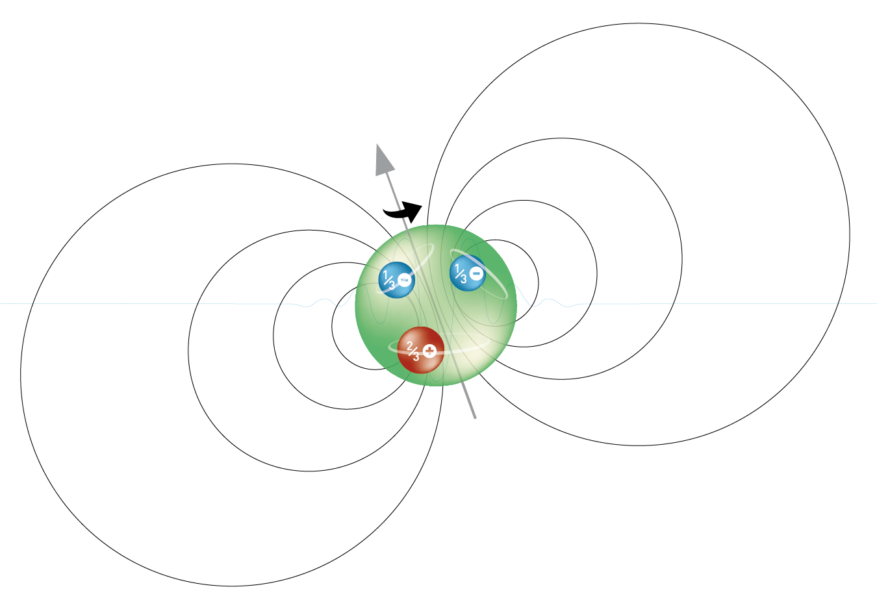
Alongside other tools for the characterization of matter, such as X-rays and nuclear magnetic resonance, neutron scattering makes an invaluable contribution to our understanding of materials and of processes occurring at different time and length scales. Neutrons have unique properties: they are tiny magnets (due to their spin and magnetic moment) that interact with the magnetic fields generated by unpaired electrons in materials. This makes neutron scattering a powerful probe of the magnetic behaviour of a material sample at the atomic level.
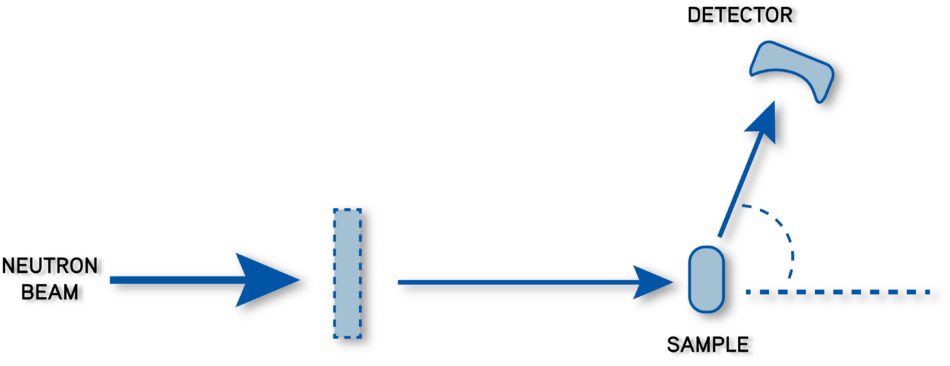
The experiments in this study were performed at the Institut Laue-Langevin (ILL) in Grenoble (France). The ILL is a European facility that provides the most intense neutron beams in the world to a unique set of over 40 neutron-scattering instruments. Scientists from all around the world come to the ILL to perform cutting-edge experiments in a variety of scientific and technological domains.
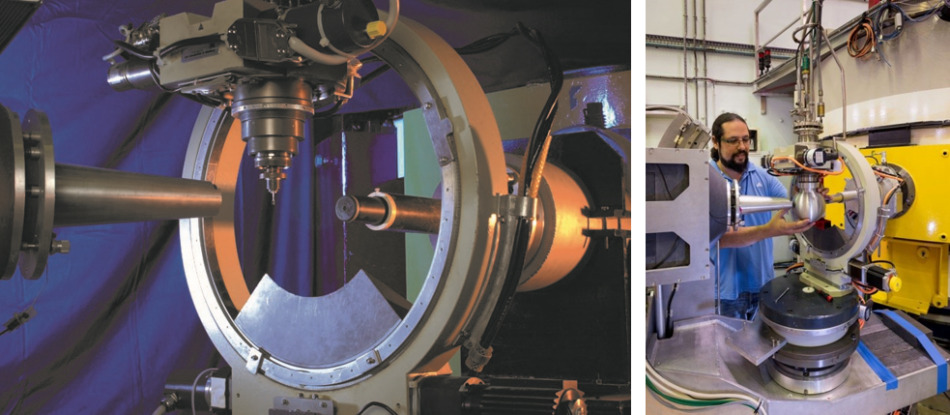
To distinguish between the different possible magnetic orders implied by previous results, it was necessary to use experimental techniques to pinpoint magnetic information much more precisely. Two strategies were essential to achieve this. The first was to replace polycrystalline powder samples with high-quality single crystals, in which long-range ordering is present and the orientation of the atoms and planes across the full sample is known. Neutron diffraction on powder (polycrystalline) samples allows for a fast, effective, and complete structure characterization of materials. Single-crystal diffraction requires larger (and hard-to-produce) samples, but is more suitable when very detailed information is required.
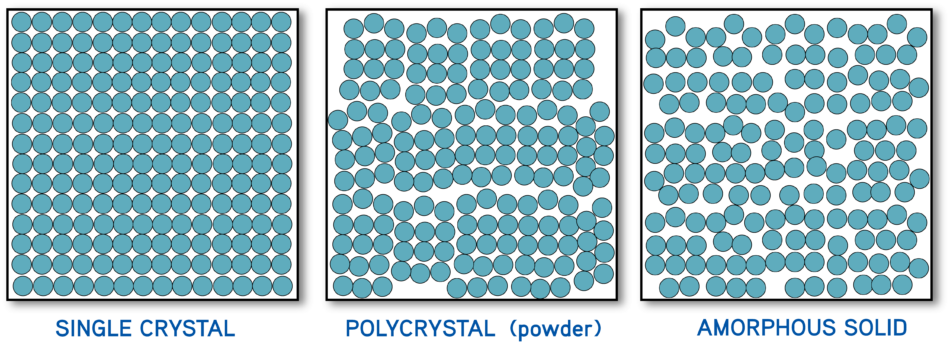
The second decisive strategy was the use of polarized neutrons, that is, with all spins aligned in the same direction. In polarized neutron scattering experiments, researchers know the original polarization state of the neutron beam impinging the sample. They then observe the polarization of the neutrons scattered off the sample. After the neutrons interact with the sample, the polarization changes direction. By comparing the two states, researchers can draw precise conclusions about the interaction of the neutrons with the sample, and thus study the magnetic properties of the material.
By combining these two strategies and making detailed measurement (several different ILL instruments were needed), the team was able to decipher the complex magnetic structure of the layered perovskite.
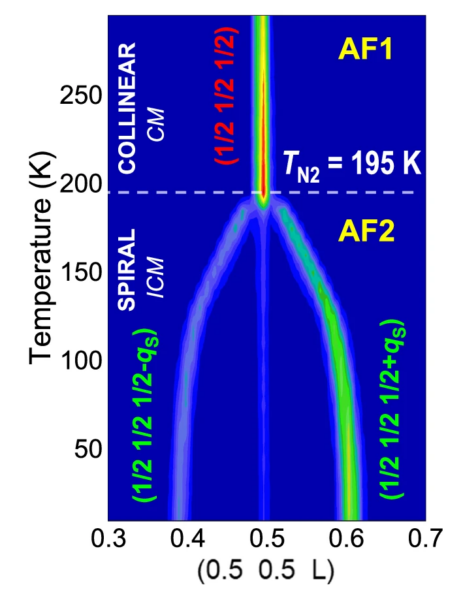
Their findings confirmed that the magnetic order in the YBaCuFeO5 crystal is spiral. In addition, they showed that the electric and magnetic properties are indeed linked. Importantly, these insights extend to perovskites in which similar ordering has been previously observed well above room temperature in powder samples.
Such studies into the properties of materials and their origin at a fundamental level are key for developing materials with applications in next-generation information technology devices. They also highlight the power of neutrons as the ideal probe for understanding magnetic properties at the nanoscale.
The crystals were grown and characterized at the Institut de Ciència de Materials de Barcelona (ICMAB-CSIC, Spain). Their magnetic structure was then extensively analyzed with neutrons at the ILL using the Instruments Orient Express, Cyclops, D9, D10, and D3. The author of this article warmly thanks the authors of the scientific work: Arnau Romaguera and José Luis García-Muñoz, from ICMAB-CSIC, and J. Alberto Rodríguez-Velamazán, Oscar Fabelo and Navid Qureshi, from ILL. She especially thanks J.A. Rodríguez-Velamazán for his help and clear explanations.
[1] Romaguera A et al. (2024) Evidence of high-temperature magnetic spiral in YBaCuFeO5 single-crystal by spherical neutron polarimetry. Communications Materials 5: 273. doi: 10.1038/s43246-024-00710-1
[2] Morin M et al. (2015) Incommensurate magnetic structure, Fe/Cu chemical disorder, and magnetic interactions in the high-temperature multiferroic YBaCuFeO. Physical Review B 91: 64408. doi: 10.1103/PhysRevB.91.064408

Stranger things: discover quantum computers, which are based on a new approach to computing powered by the strange behaviour of subatomic particles.

Build a linear accelerator to demonstrate spallation – the source of high-energy neutrons used by the new European Spallation Source being built in Sweden.

Flying high: did you know that cosmic rays can interfere with aircraft systems? Learn how scientists from ILL are working with Airbus Avionics to ensure safety in the air.